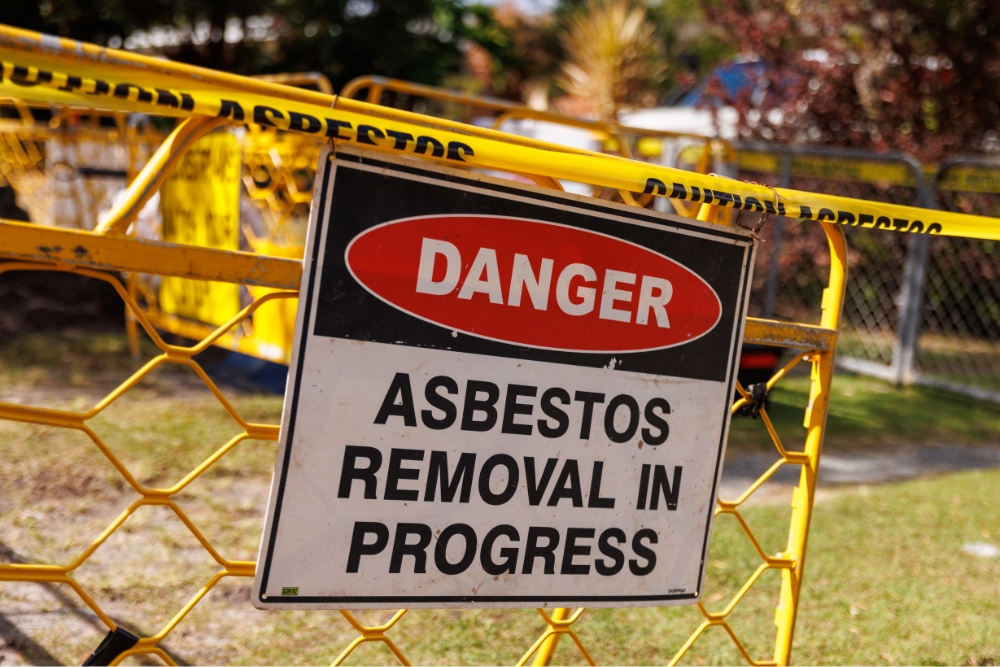Back to Basics: Asbestos Risks and Remediation for Facilities
Back to Basics is an article series that highlights important but possibly overlooked information facilities management professionals should know.
Asbestos went from being a “magic material” in the 20th century for its ability to resist heat and corrosion—to being banned by the U.S. Environmental Protection Agency (EPA).

Approximately 30 million homes and buildings in the U.S. still contain asbestos. Untangling Americans’ reliance on asbestos for everything from construction materials to brake pads will take some time—and Americans will still carry a risk of exposure, especially for blue-collar workers. An estimated 1.3 million U.S. workers in construction and general industry are at risk.
In this article, Facilities Management Advisor gives facilities managers an understanding of what asbestos is, why it is so widely used, and how they can make more informed decisions about its risks.
What’s Asbestos, Again?
Asbestos can look man-made with its fluffy qualities when disturbed, but the fibers are actually found in rock and soil.
The material was used as far back as ancient Egypt for embalming and mummification. However, asbestos became more widespread during the Industrial Revolution because of its strength, insulation, and fire-resistance properties. By the early 20th century, it was used seemingly everywhere, from public buildings to household items.
There are six different types of asbestos; some are more hazardous than others, but they all carry the risk of cancer to humans when the microscopic fibers are released into the air and inhaled. “Disturbing asbestos” can include renovations, demolition, fire, or other natural disasters. In the 1970s, asbestos started being banned due to health concerns, but it is still found in older products and buildings.
While its fire-resistant properties once made asbestos invaluable, the health risks far outweigh the benefits.
The Risks of Asbestos Exposure
About a century ago, medical researchers began to note links between asbestos and respiratory diseases. Asbestos exposure increases the risk of developing two types of cancer and progressive lung disease, according to the Agency for Toxic Substances and Disease Registry.
There is no safe level of asbestos exposure, but the more exposure, the greater the chances you have of developing it. That risk increases even more if you’re a smoker.
Facilities managers who are exposed to asbestos may also carry that risk with them on their clothes. Asbestos fibers on their clothing can create secondary exposure for families. Talk to your doctor or a lung disease specialist if you’re concerned about asbestos exposure.
However, if asbestos materials are in good condition and do not have a chance of being disturbed, they carry little risk, notes the U.S. Consumer Product Safety Commission.
Though undisturbed asbestos may not pose an immediate risk to your facility, knowing where it exists is key to managing it safely.
Identifying Asbestos in Your Facility
Many federal buildings likely still contain asbestos, especially those built before the 1980s, says Justinian C. Lane, an asbestos expert and the CEO and founder of Asbestos Claims Law.
He says that facilities managers should keep asbestos top-of-mind with routine inspections, proactive sampling, and analysis with certified asbestos professionals to gauge the presence of asbestos in air quality tests in high-risk areas that include boiler rooms, ceilings, and old flooring. He says that while this can “sometimes be easier said than done,” this analysis can prevent unexpected exposure and make renovations safer.
Asbestos can be found in building materials like cement, paint, plaster, insulation, plastic, boilers, gaskets, vinyl floor tiles, adhesives, sealants, roofing shingles, and coatings.
The EPA has extensive guides to comply with asbestos regulations in schools, workplaces, drinking water, and the air. Notably, the EPA’s most recent asbestos ban happened in 2024 and applies to a type called chrysotile.
If asbestos is identified in your facility, the next step is determining whether it should be removed or carefully managed in place.
Remediating Asbestos Before It Becomes a Problem
To ensure the safety of workers and their communities, it’s important to make a decision on asbestos removal before it becomes hazardous. However, the way facilities managers approach it is critical.
In some cases, asbestos is more dangerous to remove than if you simply leave it alone and untouched. Do not remove asbestos-containing materials yourself. Only a licensed professional can tell you if your building has asbestos and gauge whether or not to remove it.
If asbestos is left at a facility, a clear asbestos management plan is needed to define policies and procedures around potential risks. The plan should determine ways to educate employees on exposure aversion, document when materials are inspected, and changes in their condition.
Facilities managers considering asbestos removal can find safer and low-cost substitutes for insulation, cloth, and paper by using polyurethane foam, amorphous silica fabric, cellulose fiber, and thermoset plastic flour.
For guidance on managing asbestos, visit the EPA website for how to develop and maintain building asbestos operations and maintenance programs.
Better Safe Than Sorry
Framing regular asbestos monitoring as not just a compliance measure, but also a safeguard for your workers, their families, and your facility’s future, is a helpful motivator to prioritize it.
Whether through removal or proactive management, taking the proper precautions today can prevent serious health risks down the line. By staying informed about the latest asbestos regulations and implementing a clear asbestos management plan, you’re helping create safer spaces for everyone who walks through your doors.
Ali Hickerson is a freelance journalist, content writer, and strategist based in Brooklyn, N.Y. Outside of Facilities Management Advisor, Ali’s recent bylines on health and workplace issues have crisscrossed the country and helped advocate for programs and policies that work to create a healthier, more humane, and equitable world.
The post Back to Basics: Asbestos Risks and Remediation for Facilities appeared first on Facilities Management Advisor.

